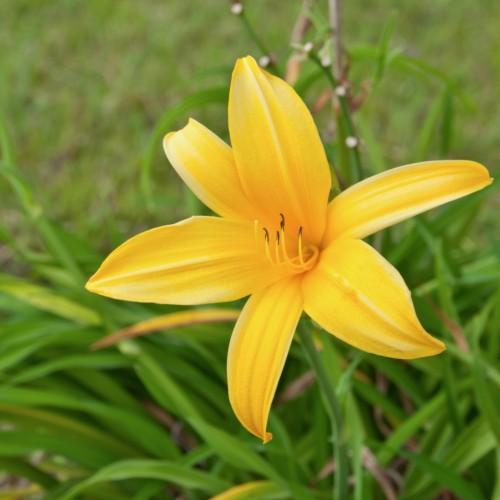
yellow daylily
Hemerocallis lilioasphodelus
Cycle:
Herbaceous Perennial
Watering:
Average
Hardiness Zone:
4 - 10
Flowers:
Flowers In Spring
Sun:
Full sun,part shade
Leaf:
Yes
Growth Rate:
Low
Maintenance:
Low
Drought Tolerant:
Yes
Salt Tolerant:
Yes
Invasive:
Yes
Care Level:
Medium
watering
Water yellow daylilies deeply when the soil dries out. The soil should be kept slightly moist but not soggy. Yellow daylilies should be watered 1-2 times a week, depending on the time of year and weather conditions. During the hotter months of summer, water 1-2 times a week to keep the soil from completely drying out. During the cooler months, water once a week, allowing the top inch of soil to dry out before watering again.
sunlight
Yellow daylilies should receive at least 6 to 8 hours of direct, unfiltered sunlight per day. They prefer full sun, but will tolerate partial shade; however, they may not flower as abundantly in shade. These plants grow best in moist, well-draining soil with a pH of 6-7.5. Fertilize your yellow daylilies twice a month during the spring and summer seasons to keep them healthy and blooming.
pruning
Yellow daylilies (Hemerocallis lilioasphodelus) should be pruned to maintain their health and appearance. Pruning should be done in late winter or early spring prior to new growth. To prune, cut the foliage back to 4-6 inches above the ground and trim away any dead leaves or stems that have grown out of shape. If you plan to divide the clump, reduce it to a manageable size first and remove diseased or damaged foliage. Make sure to discard the prunings as to not introduce any potential diseases or pests to the plant. Pruning yellow daylilies regularly will promote better blooming and healthy foliage.
